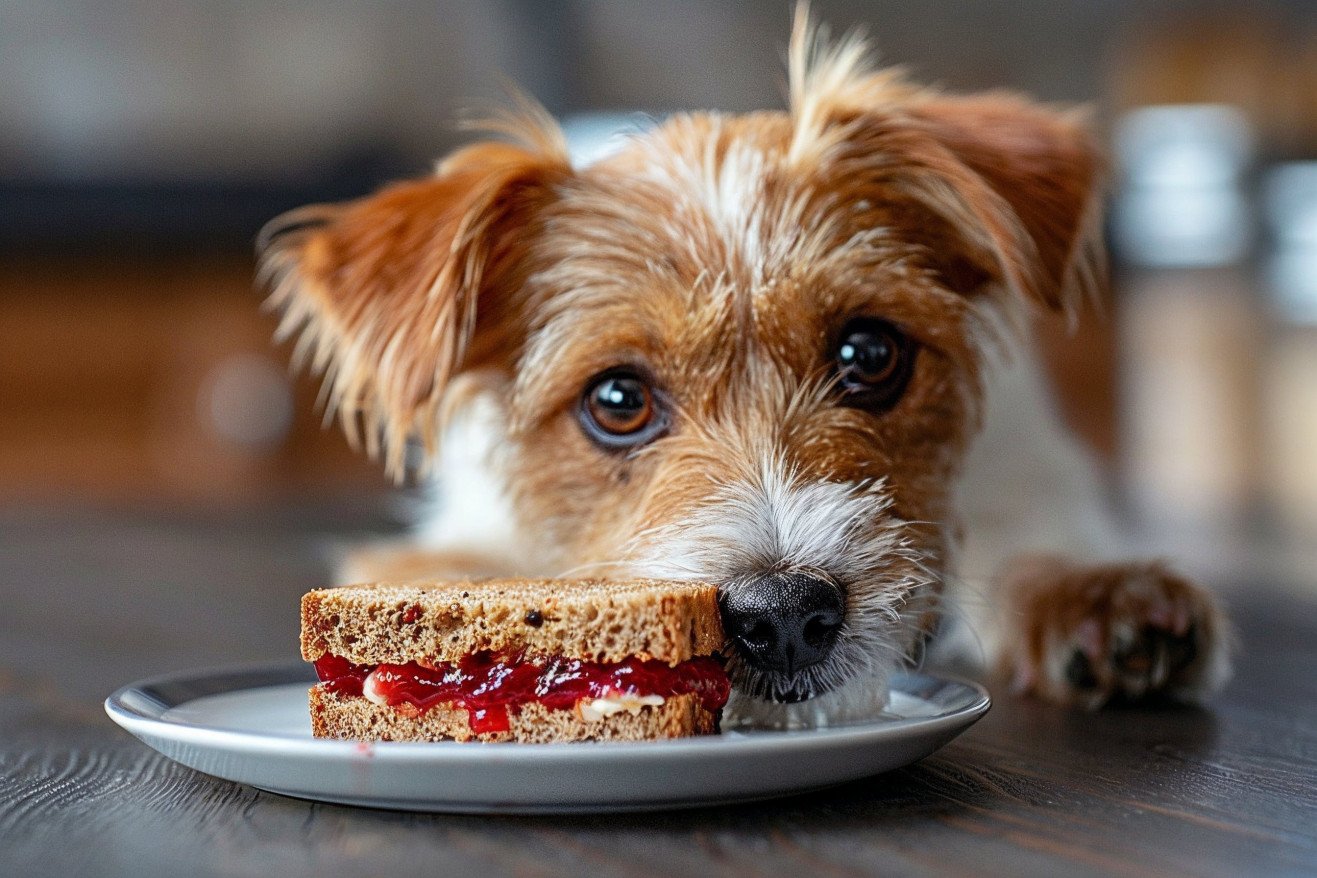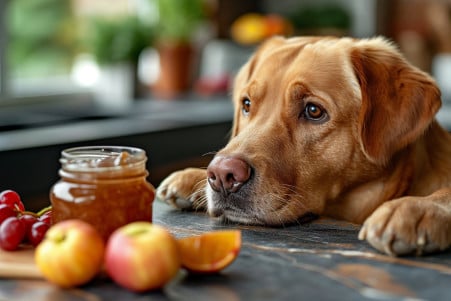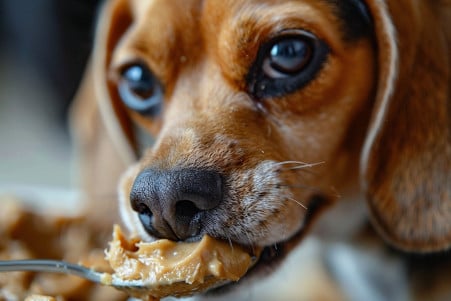Can Dogs Have Peanut Butter and Jelly Sandwiches? A Look at the Evidence
25 May 2024 • Updated 25 May 2024

Peanut butter is safe for dogs, but the bread and jelly in a peanut butter and jelly sandwich may cause digestive issues. While some dogs can tolerate small amounts of bread or fruit spreads, peanut butter is the only part of a PB&J that's safe for dogs to eat.
This article will review the evidence provided by veterinary nutritionists and other animal care professionals about the ingredients in peanut butter and jelly sandwiches to help you decide if you can give your dog this classic treat. By assessing the nutritional value and risks of giving dogs human food, you can determine if this classic lunchtime meal is best kept away from your furry friend.
Can dogs eat peanut butter and jelly sandwiches?
Peanut Butter: A Healthy Treat in Moderation
Peanut butter can be a healthy treat for dogs, providing protein, healthy fats, and essential vitamins like niacin. However, it is high in calories and fat, so portion control is crucial to prevent obesity, pancreatitis, and other health issues. As noted by Pawlicy Advisor, large amounts of peanut butter can result in obesity as well as pancreatitis for dogs at risk.
The recommended serving size for peanut butter as a treat is no more than 1 teaspoon for small dogs and 2 teaspoons for larger dogs, twice per day. It's important to choose unsalted, xylitol-free peanut butter, as xylitol is highly toxic to dogs, even in small amounts.
Dogs with specific dietary needs, such as those with chronic pancreatitis or at risk for it, should avoid peanut butter altogether or consult a veterinarian first before introducing it as a treat. While peanut butter provides some nutrients, it does not constitute a balanced diet for dogs on its own. Moderation and selecting the right peanut butter variety is key for safe treating.
Potential Hazards and Precautions of Feeding Bread to Dogs
While small amounts of plain, fully baked white or whole wheat bread can be okay for dogs, bread dough is especially risky because of the fermentation process, according to JAMES WELLBELOVED™. Dogs should not eat bread that contains raisins, grapes, garlic, nuts, or chocolate, which are all toxic to dogs, according to the American Kennel Club.
Because bread is high in carbohydrates and calories, overeating can lead to weight gain, obesity, and digestive problems in dogs. Dogster says that if you do give your dog bread, it's best to give them small amounts of plain white, whole wheat, or rye bread, and make sure to read the ingredients to make sure it doesn't contain anything that's toxic to dogs. While bread can be used to calm a dog's stomach, a bland diet of rice and chicken is typically recommended for this purpose, according to The Wildest.
Jelly and Jam: A Sugary Snack That Dogs Should Steer Clear Of
Jelly and jam are not safe for dogs to eat due to their high sugar content, which can contribute to obesity, diabetes, dental issues, and other health problems, says DogTime. In addition, some jellies and jams may include fruits that are toxic to dogs, such as grapes or raisins.
Even if jelly and jam are sugar-free, they may contain xylitol, an artificial sweetener that is extremely poisonous to dogs, even in small amounts, explains Pawlicy Advisor. If a dog has eaten jelly or jam, it's important to read the product's ingredient list and call a vet immediately if any toxic ingredients are listed.
In general, it's best to avoid giving dogs jelly or jam since the risks of doing so are greater than the potential rewards, according to DogTime and Canine Bible. Although some of the fruits in jam may be OK for dogs to eat in small amounts, the high sugar content of jelly and jam makes them an unhealthy snack.
What Dogs Need for a Healthy Diet
Dogs need to eat a diet that includes the proper balance of protein, fat, carbohydrates, vitamins, minerals, and water to stay healthy, according to WebMD. The Association of American Feed Control Officials (AAFCO) sets the standards for the minimum amounts of these essential nutrients and the maximum amounts of other nutrients in complete and balanced dog food, according to PetMD.
The formulas for commercial dog foods that meet AAFCO standards are designed to provide complete and balanced nutrition for dogs at different stages of life, according to UK Pet Food. Homemade dog food formulas should be created by a board-certified veterinary nutritionist to make sure they include all the nutrients a dog needs, according to the Merck Veterinary Manual.
While peanut butter and jelly sandwiches may offer some nutritional benefits, they don't meet the requirements for a complete and balanced diet for dogs, according to VCA Animal Hospitals. That's why it's important to make sure your dog gets all the essential vitamins, minerals, proteins, fats, and carbohydrates they need to stay healthy.
Conclusion: How to Safely Give Your Dog Peanut Butter
While peanut butter can be a safe and fun treat for dogs, it's important to be careful when giving it to your pet. Always make sure you're using an unsalted, xylitol-free peanut butter, and consider making your own at home so you can control exactly what goes into it.
If you're just starting to give your dog peanut butter, make sure you're giving them small amounts and watching them for any signs of an allergic reaction or other issues. Stick to the portion sizes that are recommended based on your dog's weight and size, and never give your dog more than 10% of their daily caloric intake in treats. If you're ever worried about giving your dog peanut butter, don't hesitate to ask your vet for advice.
In the end, peanut butter and jelly sandwiches are off-limits, since the bread and jelly can be harmful to your dog. Instead, stick to plain, unsalted peanut butter as an occasional treat, and make sure you're keeping your dog's overall nutritional needs in mind by feeding them a balanced, AAFCO-approved diet.


